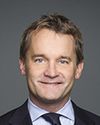The 10-page brief submitted to you today depicts the current state of museums in Canada and highlights some innovative projects and activities that demonstrate the changing role of contemporary museums.
It follows important consultations and studies undertaken by both Société des musées du Québec's “États généraux des musées du Québec” in 2011, and the Ontario Museum Association's recently published “Ontario's Museums 2025: Looking Ahead”, in which I participated.
Our brief also puts forward important recommendations aimed to improve the support offered to Canada's museum community in order to ensure its stability and its sustainability.
Our presentation this morning focuses on only a few of these recommendations, so we invite you to read our detailed brief for more information.
Through their outstanding exhibitions, educational programs, and outreach, museums offer opportunities for valuable learning experiences and social dialogue. This public face of museums is well understood and appreciated, yet the majority of museum operations occur behind the scenes, and this is where they require more public and private support.
Let me be blunt. The current state of non-government museums in general is one of extreme neglect. Roofs leak, buildings lack proper heat and humidity controls, artifacts rot away in poor conditions, and little research is accomplished. The reality facing many small museums is not a pretty picture; it is a shocking portrait.
The skills needed to work in the museum sector are also evolving to encompass a wide range of business management, fundraising expertise, and new technologies. Museum professionals are working closely with their communities to create value, and more emphasis is placed on public relations, digital outreach, and fundraising expertise.
Most museums have lost or are losing their curators and experts; in the eyes of many in the museum world, this is evidence of a crisis. Without curators or experts able to understand and interpret the museum collections, they are nothing. There is an urgent need to provide a greater range and a greater number of training opportunities for museums and museum professionals.
Museums also require better support for the many administrative and legal tasks that result from their growing activities and responsibilities. This support includes an improvement of the Copyright Act, the exclusion of museums from the Firearms Act, a loosening of insurance requirements, support for digitization initiatives, and the encouragement of partnerships between small and large museums, just to give a few examples.


